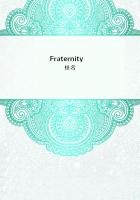Female -- Olive-brown, and yellow where the male is orange. Young browner than the females.
Range -- North America to upper Canada. West occasionally, as far as the Pacific coast, but commonly found in summer in the Atlantic and Middle States.
Migrations -- Early May. End of September. Summer resident.
Late some evening, early in May, when one by one the birds have withdrawn their voices from the vesper chorus, listen for the lingering "'tsee, 'tsee, 'tseet" (usually twelve times repeated in a minute), that the redstart sweetly but rather monotonously sings from the evergreens, where, as his tiny body burns in the twilight, Mrs. Wright likens him to a "wind-blown firebrand, half glowing, half charred."But by daylight this brilliant little warbler is constantly on the alert. It is true he has the habit, like the flycatchers (among which some learned ornithologists still class him), of sitting pensively on a branch, with fluffy feathers and drooping wings; but the very next instant he shows true warbler blood by ****** a sudden dash upward, then downward through the air, tumbling somersaults, as if blown by the wind, flitting from branch to branch, busily snapping at the tiny insects hidden beneath the leaves, clinging to the tree-trunk like a creeper, and singing between bites.
Possibly he will stop long enough in his mad chase to open and shut his tail, fan-fashion, with a dainty egotism that, in the peacock, becomes rank vanity.
The Germans call this little bird roth Stert (red tail), but, like so many popular names, this is a misnomer, as, strictly speaking, the redstart is never red, though its salmon-orange markings often border on to orange-flame.
In a fork of some tall bush or tree, placed ten or fifteen feet from the ground, a carefully constructed little nest is made of moss, horsehair, and strippings from the bark, against which the nest is built, the better to conceal its location. Four or five whitish eggs, thickly sprinkled with pale brown and lilac, like the other warblers', are too jealously guarded by the little mother-bird to be very often seen.
BALTIMORE ORIOLE (Iderus galbula) Oriole and Blackbird family Called also: GOLDEN ORIOLE;FIREBIRD; GOLDEN ROBIN; HANG-NEST;ENGLISH ROBIN
Length -- 7 to 8 inches. About one-fifth smaller than the robin.
Male -- Head, throat, upper part of back glossy black. Wings black, with white spots and edgings. Tail-quills black, with yellow markings on the tips. Everywhere else orange, shading into flame.
Female -- Yellowish olive. Wings dark brown, and quills margined with white. Tail yellowish brown, with obscure, dusky bars.
Range -- The whole United States. Most numerous in Eastern States below 55 degrees north latitude.
Migrations -- Early May. Middle of September. Common summer resident.
A flash of fire through the air; a rich, high, whistled song floating in the wake of the feathered meteor: the Baltimore oriole cannot be mistaken. When the orchards are in blossom he arrives in full plumage and song, and awaits the coming of the female birds, that travel northward more leisurely in flocks. He is decidedly in evidence. No foliage is dense enough to hide his brilliancy; his temper, quite as fiery as his feathers, leads him into noisy quarrels, and his insistent song with its martial, interrogative notes becomes almost tiresome until he is happily mated and family cares check his enthusiasm.
Among the best architects in the world is his plain but energetic mate.
Gracefully swung from a high branch of some tall tree, the nest is woven with exquisite skill into a long, flexible pouch that rain cannot penetrate, nor wind shake from its horsehair moorings. Bits of string, threads of silk, and sometimes yarn of the gayest colors, if laid about the shrubbery in the garden, will be quickly interwoven with the shreds of bark and milkweed stalks that the bird has found afield. The shape of the nest often differs, because in unsettled regions, where hawks abound, it is necessary to make it deeper than seven inches (the customary depth when it is built near the homes of men), and to partly close it at the top to conceal the sitting bird. From four to six whitish eggs, scrawled over with black-brown, are hatched by the mother oriole, and most jealously guarded by her now truly domesticated mate.
The number of grubs, worms, flies, caterpillars, and even cocoons, that go to satisfy the hunger of a family of orioles in a day, might indicate, if it could be computed, the great value these birds are about our homes, aside from the good cheer they bring.
There is a popular tradition about the naming of this gorgeous bird: When George Calvert, the first Lord Baltimore, worn out and discouraged by various hardships in his Newfoundland colony, decided to visit Virginia in 1628, he wrote that nothing in the Chesapeake country so impressed him as the myriads of birds in its woods. But the song and color of the oriole particularly cheered and delighted him, and orange and black became the heraldic colors of the first lords proprietors of Maryland.
Hush! 'tis he! My Oriole, my glance of summer fire, Is come at last; and ever on the watch, Twitches the pack-thread I had lightly wound About the bough to help his housekeeping.
Twitches and scouts by turns, blessing his luck, Yet fearing me who laid it in his way.
Nor, more than wiser we in our affairs, Divines the Providence that hides and helps.
Heave, ho! Heave, ho! he whistles as the twine Slackens its hold; once more, now! and a flash Lightens across the sunlight to the elm Where his mate dangles at her cup of felt.
-- James Russell Lowell.
BIRDS CONSPICUOUSLY RED OF ANY SHADE















